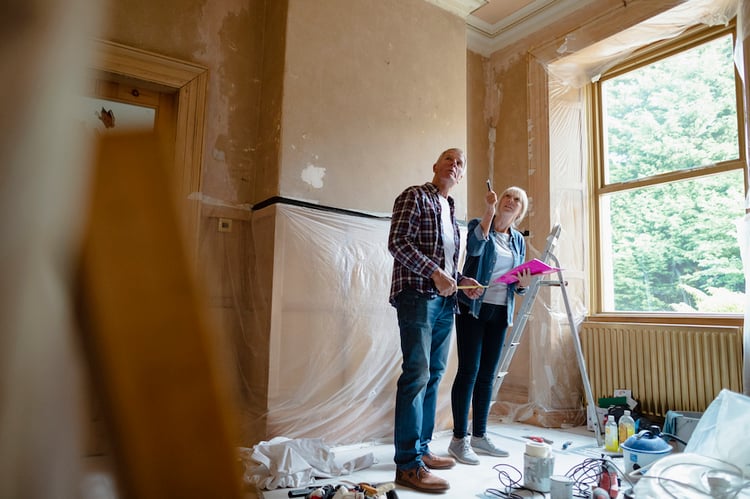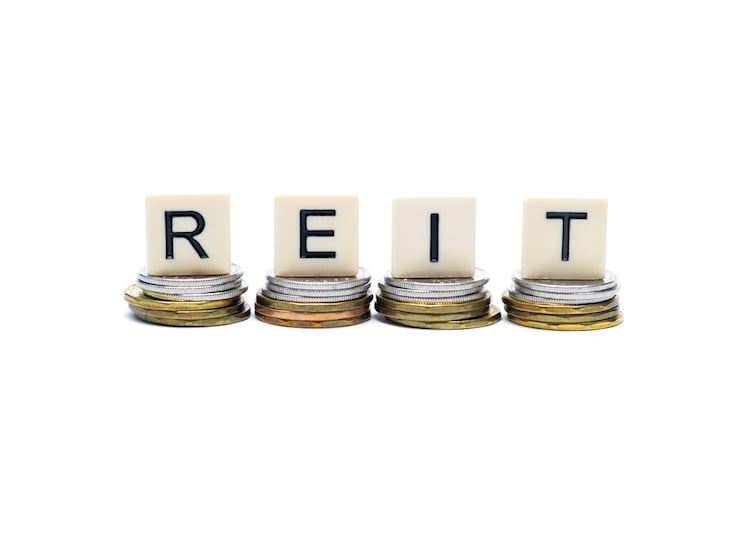Sometimes people find themselves in the enviable position of having a significant amount of extra cash on hand, say $40,000 for example.
You could invest that $40,000 in the stock market of course, though you’d have to accept the risk that comes with stocks’ volatility. Or you could invest it in government bonds for lower volatility, and accept the lower yield and returns.
If only there were a third option, that combined both the returns of stocks with the low volatility of bonds!
Enter: rental properties. With the way the real estate market is performing today, investing in rental property is top of mind for many investors.
But with housing prices the way they are, is it really possible to invest in real estate with $40K? Believe it or not, the answer is: Yes.
Key takeaways
- There are a surprising number of ways to invest in real estate with $40K, or even less.
- Options for directly investing in real estate include owning a SFR, fixing and flipping a home, and using the BRRRR investing strategy.
- Ways to indirectly invest in real estate with $40K include wholesaling, real estate crowdfunding, and owning shares of a REIT.
1. Purchase an SFR
Home values and rent prices for SFRs (single-family rentals) are soaring, with tenant occupancy rates the highest they’ve been in over 25 years. For some investors with extra cash, there may be no time like the present to invest in a single-family home to rent.
But with the typical value of a middle price tier home currently over $303,000 (Zillow through August 31, 2021), how does an investor come up with a 25% down payment with only $40K? The answer is to look at suburban areas close to large urban markets, and smaller secondary cities.
For example, the Roofstock Investment Property Marketplace currently has hundreds of single-family homes listed for sale priced at $150,000 or less. Properties have already had some initial due diligence performed – such as pulling a title report or a property inspection – and may already be rented to tenants.
2. BRRRR
BRRRR – which stands for Buy, Renovate, Rent, Refinance, and Repeat – is a strategy that some real estate investors use to scale up and grow a rental property portfolio one home at a time.
One of the best things about BRRRR is that a real estate investor doesn’t have to reinvent the wheel each time a rental property is purchased. Once a system that works is in place, simply do the same thing over and over again.
For example, an investor may purchase a single-family rental home for $100,000 using a down payment of $25K. The balance of the money is used to update and renovate the home to force appreciation, rent the home to a good tenant at the market rent, then refinance the property when the time is right and pull out the $40K invested and search for another rental property.
Each rental property added to the real estate portfolio increases the potential amount of rental income earned, eventually creating a fountain of funds to invest in more real estate.
3. Short-term rentals
Renting a property out by the night, week, or month-to-month has the potential to generate more gross rental income than a long-term rental.
According to Realtor.com, some of the best places for investors to cash-in on the post-pandemic travel boom include Arizona, Georgia, Nevada, and Utah.
Financing a vacation property or short-term rental works the same way that any other investment property loan does, with lenders expecting down payments of around 25% and interest rates a little higher than a primary residence.
However, investors may wish to keep in mind that owning a short-term rental is similar to being in the hospitality business. Although the rental income may be higher, tenants may be more demanding, and operating expenses are generally higher due to increased tenant turnover.

4. Wholesale a home
Wholesaling is another way to invest in real estate with only $40K, without actually taking possession of the home or using it as a rental. Real estate wholesaling is similar to fixing and flipping, except the wholesaler finds another investor to do the work.
Here’s how wholesaling a home works:
- Identify an undervalued property by driving for dollars or hiring a real estate bird dog
- Accurately estimate the after repair value (ARV) and maximum allowable offer (MAO)
- Tie up the property with a purchase contract and a minimal earnest money deposit
- Assign the contract to buy-and-hold real estate investor in exchange for a wholesale fee
The investor the purchase contract is assigned to closes escrow on the home, makes the needed repairs, and rents the newly renovated home to a qualified tenant. Investors who work with real estate wholesalers may also have instant equity in the home when the ARV is less than the fair market value.
Of course, as with fixing and flipping, working as a real estate wholesaler requires a significant amount of time, energy, and in-depth knowledge of the local market place. And, in many states, a real estate license is required to wholesale. While there is a high level of risk involved, wholesaling a home may also be an easy way to generate income without owning real estate.
5. House hacking
Real estate investors who house hack use a primary residence to generate rental income, then use the extra cash flow to quickly pay off the mortgage or save the money for a down payment on a rental property.
House hacking is a creative technique for investing in a single-family home or a small 2-, 3-, or 4-unit multifamily property. Financing a primary residence generally requires a down payment of between 3% and 20%, and loans for owner-occupied property normally have lower interest rates as well.
Single-family homeowners with $40K on hand may find that converting a basement, garage, or attic into a small apartment is a good way to create a short-term rental in a home they already own. If a major renovation doesn’t fit the budget, renting a room out as a vacation or short-term rental can also generate a fair amount of extra income.
Investors who house hack a small multifamily property live in one unit and rent the other ones out. It’s a good way to learn the ins and outs of being a landlord while using rental income from the neighboring tenants to pay for the mortgage and the costs of owning and maintaining the property.
6. Crowdfunding
Crowdfunding is a way to invest in real estate by pooling a small amount of personal capital with other investors to participate in large deals. Typical crowdfunding opportunities may include buying shares in a new home development, renovating an apartment building, or purchasing an office building or shopping center.
Some of the most popular crowdfunding platforms such as Fundrise, CrowdStreet, and EquityMultiple offer minimum investments of between $10 and $25,000. That means an investor with an extra $40K may put money into multiple crowdfunding projects to diversify a real estate portfolio.
While crowdfunding real estate can be a good way to passively participate in large investments in different asset classes across the country, there are also some drawbacks to consider as well.
Return on investment may be less than other real estate investing options, investors have minimal control over the investment, and the best crowdfunding deals are often restricted to accredited investors with earned annual income of $200,000 or more, or have a net worth of over $1 million (excluding a primary residence).
7. Invest in a REIT
A REIT (real estate investment trust) may be a good option for investors who want to invest $40K in real estate while still having a high level of liquidity. Unlike owning property directly, REIT shares are often bought and sold on the major stock exchanges through trading platforms such as Robinhood, Charles Schwab, and Interactive Brokers.
REITs can also be a good way to diversify a real estate investment portfolio geographically and by asset class. According to Kiplinger, the 10 best REITs for the rest of this year include American Tower for communication infrastructure, UMH Properties for manufactured housing communities, STAG Industrial for e-commerce growth, and VICI Properties for gaming and entertainment properties.
Other ways to invest $40K
Investing in real estate may not be the best choice for everyone. Other ways to invest $40K outside of real estate include:
- Setting up an additional retirement account such as an HSA or Roth IRA and investing in individual stocks, index funds, or mutual funds.
- Paying off a student loan or helping a family member reduce their debt.
- Purchasing a CD or 10-year Treasury and saving the money for a rainy day
- Acting as a private lender by making personal or business loans to generate an interest income stream every month.










